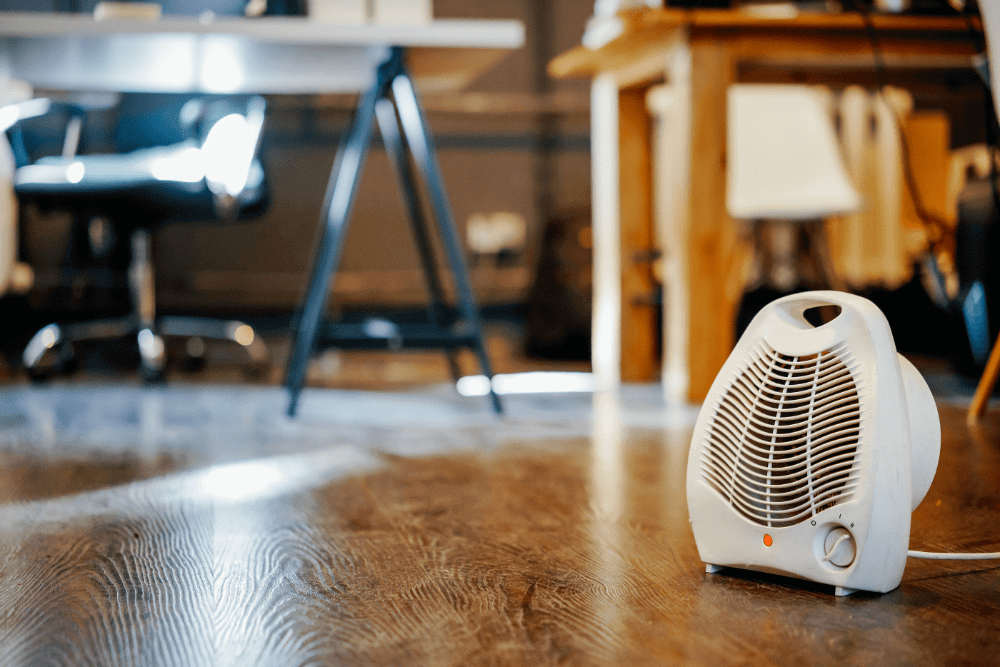The Single Strategy To Use For 1 Source Portable Air
The 20-Second Trick For 1 Source Portable Air
Table of ContentsHow 1 Source Portable Air can Save You Time, Stress, and Money.Some Known Questions About 1 Source Portable Air.The Of 1 Source Portable AirAn Unbiased View of 1 Source Portable AirThe 1 Source Portable Air Ideas
Running costs are based on a power price of 40c/kWh. The costs for 3 months' use in winter months are based upon 500 hours make use of, or approximately 6 hours per day for three months. Maximum warm outcome is based on the maximum power level of the designs we have actually examined (we concentrate on greater electrical power heaters).
On average, tiny fan heaters are much less pricey to get, but can have greater running costs. Oil column heating systems will be the cheapest on the market to run (on standard) however just by a narrow margin in advance of convection heating systems (like panel and micathermic panels).
Everything about 1 Source Portable Air
If you have a reversible ceiling follower, it'll aid spread the heat around the area a lot more evenly. The versions in our electric heating systems test normally variety in rate from well under $100 to over $900, however we have actually found a greater price tag does not always indicate better performance. A variety of pricey heating units have stopped working to excite our testers, while some more affordable models produce remarkably bargains.
As the name recommends, they emit warmth from a red-hot heating element (so the household will have to take turns resting in front of it). Glowing heaters are relatively economical.
Radiant heaters generally cost in between $20 and $200. Oil-filled column heating units don't actually burn oil they make use of power to warm the oil that's secured inside their columns or 'fins'.
Fascination About 1 Source Portable Air
Some column heating systems aren't even oil-filled but rather use various other material or heating innovation to work similarly - 1 Source Portable Air. The risk of fire with an oil column heating unit is low contrasted to various other heating unit kinds, but never ever no. Oil heating systems don't have actually subjected components like radiant heating systems do, and their surface temperature level is less than many various other heating system types (their large surface makes up for it)
Oil column heaters will not explode, and while they don't melt their oil to generate warm, it's still combustible, so there is a fire risk if the oil leaks, if the heater topple and leaks, or if flammable items or material enter into call or drop on the heater. You must work out the same degree of caution with oil heating units when it comes to various other heater types, and never hang towels or garments over one to completely dry them use a drying rack instead, at the very least one metre away.
Column heating systems are particularly useful in spaces where they'll be changed on for extended periods of time or where they'll run unattended, such as overnight in a bedroom. The surfaces you're likely to touch on a column heating unit don't get as hot as various other sorts of electrical heating systems. You can make use of a ceiling follower on very low speed to help the column heating unit to disperse the warmth much faster and extra evenly.
If there's very little air activity (for instance, my blog if you're resting reading or viewing TV), the heat may not be dispersed equally. Oil-filled column heating systems normally set you back between $50 and $450. Convection and panel heating units draw cold air over an electric home heating aspect. The heated air then leaves the heating have a peek here system and climbs towards the ceiling, while cooler air relocations in to replace it.
The Greatest Guide To 1 Source Portable Air

Convection and panel heating units are more portable than their oil-filled column heating system counterparts due to the fact that they're considerably lighter. They'll warm the air in a room equally and quickly. Like a column heating unit, you can make pop over to these guys use of a ceiling fan on extremely reduced speed to disperse the warmth faster and a lot more evenly. Some designs, specifically panel heaters, are relatively pricey to buy.

Little Known Facts About 1 Source Portable Air.
Follower heating units are commonly smaller sized and a lot more mobile than other electric heaters. They also come in the form of tower fan heating systems, which can be much better for dispersing warmth around bigger areas because of their taller profile. They can heat the air in a room more rapidly, evenly and quickly than a few other heating unit types.
Follower heating units (ceramic or otherwise) typically price between $60 and $900. Ceramic fan heating units aren't necessarily any kind of various in price to non-ceramic versions.